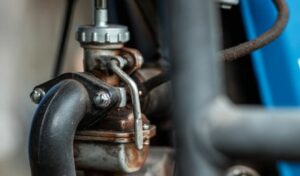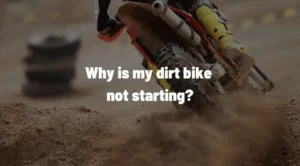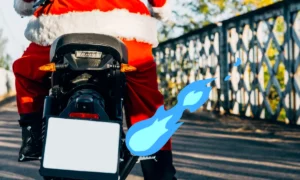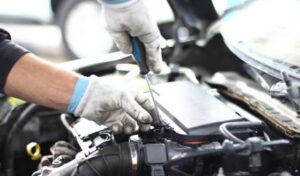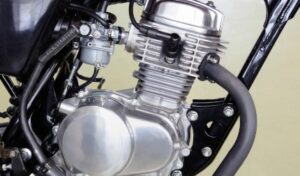Like any mechanical device, motorcycles need regular inspection and maintenance. Vacuum leaks affect bike performance. Motorcycle hoover leaks and their efficient repair are explained in this article.
Motorcycle vacuum leaks occur when air enters the intake manifold. Unwanted air disrupts the critical air-fuel mixture, causing performance issues. When a motorcycle vacuum system leaks, fuel injection and emission control can be affected.
Degraded hoover hoses, loose connections and faulty seals can cause hoover leaks. To fix and prevent leaks, you must identify the cause.
Recognizing the Signs of a Vacuum Leak
Recognizing hoover leaks can save time, money and motorcycle damage. Vacuum leak symptoms:
Vacuum leaks in motorcycles cause symptoms similar to those in humans. Early detection can prevent more serious issues. Motorcycle vacuum leak symptoms include:
1. Poor Fuel Efficiency
Poor fuel efficiency indicates a vacuum leak. If your motorcycle uses more gas than usual, a vacuum leak may be causing an improper air-fuel mixture. This imbalance makes the engine work harder, wasting fuel.
2. Rough Idling and Inconsistent Acceleration
Vacuum leaks in motorcycles disturb the air-fuel mixture. This can cause your motorcycle’s engine to’miss’ or run unevenly when idling. Disrupted air-fuel mixtures also cause jerky acceleration.
3. Motorcycle Backfires or Makes a Hissing Noise
Vacuum leaks can cause exhaust backfires. Misfiring air-fuel mixtures ignite fuel in the exhaust system instead of the combustion chamber. If your engine hisses, air is entering through the leak.
4. Decrease in Power and Performance
Vacuum leaks can reduce motorcycle performance. A vacuum leak may cause your motorcycle to lose power or struggle to maintain speeds.
Recognizing these symptoms is the first step to hoover leak diagnosis and repair. It’s important to note that hoover leaks aren’t the only cause of these signs. To confirm a hoover leak, additional testing is needed. We’ll discuss motorcycle vacuum leak diagnosis and repair in the following sections.
Basic Concepts Relevant to Vacuum Leaks
To understand a vacuum leak, it’s important to grasp the basics of a motorcycle’s vacuum system. The vacuum system is responsible for managing the flow of air and fuel into the engine. When this system has a leak, the balance between air and fuel can be disrupted, leading to problems in your motorcycle’s performance.
If you suspect a vacuum leak, start with a visual inspection. Look for cracks, holes, or loose connections in the vacuum lines and carburetor. Some tools that can be useful for detecting vacuum leaks include a mechanic’s stethoscope, carb cleaner, or a smoke machine. These tools can help locate the source of the leak, which is crucial for effective repair.
Step-by-step Guide to Fixing a Vacuum Leak
Fixing a hoover leak at home requires patience and the right tools. Here’s a step-by-step guide:
1. Safety First:
Before starting, turn off and cool the motorcycle. Starting on a cold engine prevents burns and other injuries.
2. Locate the Leak:
Locate the leak first. Carb cleaners are easy. Spray carb cleaner around vacuum hoses and joints with the engine running. Spraying an area changes the engine’s idle speed, indicating a leak.
Perform a smoke test. Force smoke into the intake manifold and observe where it escapes. Since it requires specialised equipment, professionals should do this.
3. Inspect the Vacuum Lines:
Turn off the engine and inspect the vacuum lines after locating the leak. Look for cracks, loose connections, and worn hoses.
4. Replace Damaged Parts:
Replace damaged hoses and connections. Auto parts stores sell cheap hoover hoses. To ensure a proper fit, use the same-diameter hoses.
5. Tighten Loose Connections:
Loose connections can also lead to vacuum leaks. Check all the hose clamps and connections in the area of the leak and tighten them if needed. However, be careful not to overtighten, as this can damage the hoses.
6. Seal the Leak:
Some leaks can be sealed without replacing parts. Vacuum sealants can often do this. Seal the leak and let it dry according to the package instructions.
7. Test Your Repair:
After repairing the vacuum leak, start the engine and check for symptoms. To confirm no leaks, repeat your carb cleaner or smoke test.
8. Post-Repair Check:
Check your motorcycle’s performance after a repair. To ensure a complete fix, consult a professional if any vacuum leak symptoms return.
Minor hoover leaks can be fixed at home, but complex leaks may require professional help. Know your limits and don’t hesitate to get help. Motorcycle health is important, and a professional mechanic can help.
Handling Specific Motorcycle Models
Motorcycle riders should be aware of model-specific differences when diagnosing and fixing hoover leaks. Each model—Harley Davidson, Yamaha, or Honda—has its own engineering and design details. Addressing them:
1. Refer to Your Owner’s Manual:
Start with your owner’s manual. It provides model-specific information about the motorcycle’s vacuum system and how to inspect it. It also suggests replacement parts.
2. Look for Model-Specific Guides and Tutorials:
Online resources supplement your owner’s manual. From forums to video tutorials, someone has likely experienced a similar problem with the same motorcycle model and shared their experience. Use these resources.
3. Be Aware of Common Issues in Your Model:
Some models have known issues with hoover leak-prone parts. Older motorcycles may have more fragile vacuum lines that crack and leak. Knowing these issues can aid diagnosis.
4. Consult with a Professional:
If you’re having trouble finding information about your motorcycle model, contact a professional mechanic. They can advise on your motorbike.
While general knowledge about vacuum leaks and how to repair them is important, it’s equally important to understand how these principles apply to your motorcycle model. You can diagnose and fix a motorcycle vacuum leak with this mix of general and specific knowledge.
Prevention and Maintenance
Vacuum leak repair is important, but prevention is better. Maintenance prevents hoover leaks. Take these precautions:
1. Regular Inspections:
Regularly inspect your motorcycle’s vacuum system. Cracks or loose fittings indicate wear and tear. This can help you spot issues before they escalate.
2. Use Quality Parts:
Always use high-quality parts when replacing them. Poorly fitting or low-quality parts can cause vacuum leaks and other issues.
3. Keep it Clean:
Dirt and debris wear out hoover lines and seals. Keep your motorbike clean to avoid this.
4. Follow the Manufacturer’s Maintenance Schedule:
Motorcycle manufacturers provide maintenance schedules for a reason. This schedule will help you maintain your motorcycle and prevent vacuum leaks.
5. Regular Oil Changes:
Engine health requires regular oil changes, which are unrelated to vacuum leaks. A well-lubricated engine resists cracks and leaks.
6. Store Your Motorcycle Properly:
Exposure to extreme temperatures and the elements can cause wear and tear on your vacuum lines and seals. When not in use, store your motorcycle in a garage or use a motorcycle cover.
Vacuum lines and seals can deteriorate in extreme temperatures and weather. Use a motorcycle cover or garage to store your bike.
Preventing a vacuum leak saves time, money, and the hassle of engine damage or performance issues. Preventive motorcycle maintenance can keep it running smoothly.
When to Seek Professional Help
Some hoover leaks require professional repair. If you can’t find the leak or can’t fix it, take your motorbike to a mechanic. They’re equipped to quickly identify and fix the problem.
Frequently Asked Questions (FAQs)
How Does a Vacuum Leak Affect Motorcycle Performance?
A vacuum leak can lead to poor fuel efficiency, rough idling, inconsistent acceleration, and reduced power.
What Causes a Vacuum Leak on a Motorcycle?
Vacuum leaks are typically caused by damaged or worn-out vacuum lines, seals, or connectors.
How Do I Detect a Vacuum Leak on My Motorcycle?
Look for the symptoms mentioned above and use diagnostic tools like a stethoscope or carb cleaner.
Can I Ride My Motorcycle with a Vacuum Leak?
While it’s possible to ride a motorcycle with a vacuum leak, it’s not recommended. A vacuum leak can lead to poor performance and potential engine damage.
How Much Does It Cost to Fix a Vacuum Leak on a Motorcycle?
The cost varies based on the nature of the leak and whether you need professional help. However, regular maintenance can help prevent vacuum leaks, saving you money in the long run.
Can a Vacuum Leak Cause Irreparable Damage to My Motorcycle?
If left unchecked, a vacuum leak can cause serious damage to the engine over time.
What Tools Do I Need to Fix a Vacuum Leak on a Motorcycle?
Useful tools include a mechanic’s stethoscope, carb cleaner, and a smoke machine, among others.
Conclusion
Maintaining motorcycle performance requires immediate vacuum leak repair. Regular maintenance, prompt leak detection, and knowing when to call a professional can prevent costly repairs.

